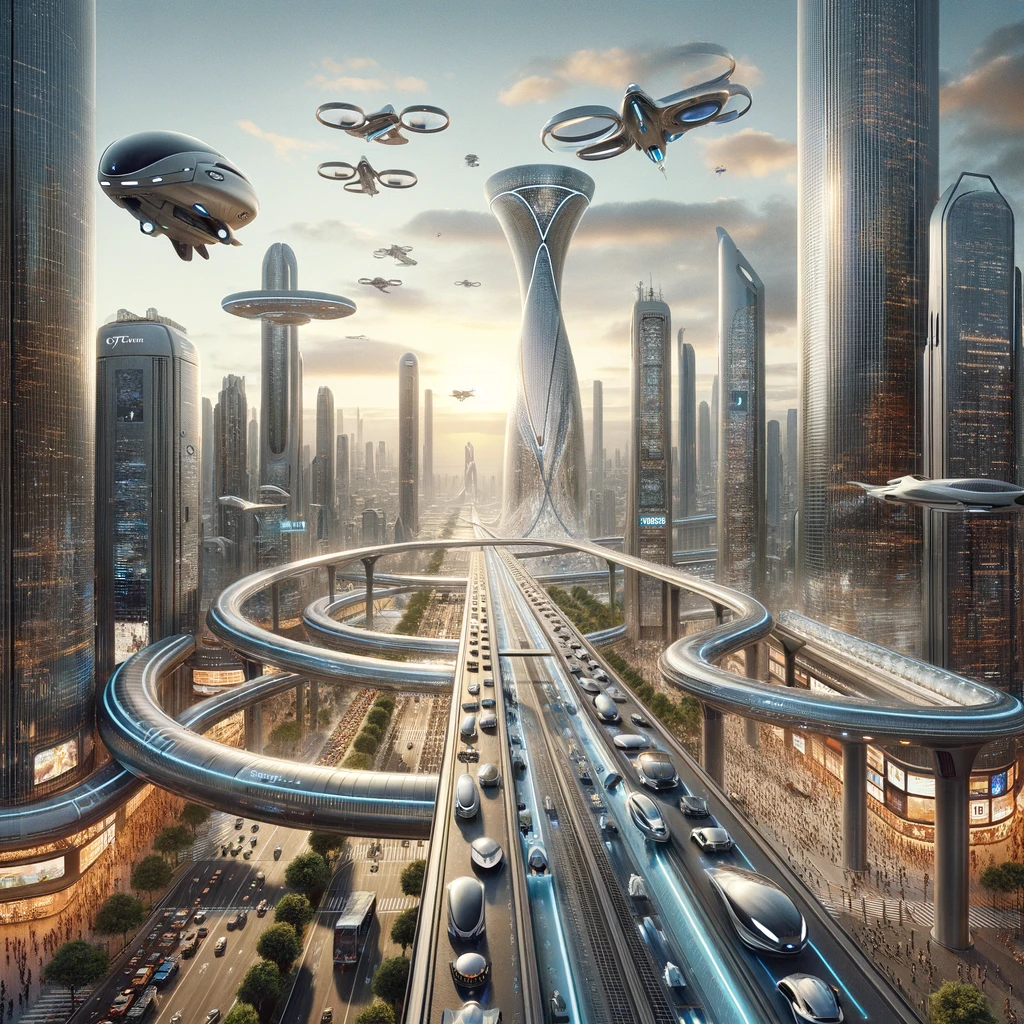When will we see "The Jetsons" IRL ? The Future of Transport
Launching our new Research Stream

Over half a century ago, “The Jetsons”, a futuristic cartoon from the 1960s, painted a vivid picture of life in the 21st century, complete with flying cars, automated homes, and robotic assistants.
We’re researching the future of transportation against the overarching question: Why hasn’t the Jetsonian future materialised yet, and when can we realistically expect it to?
At the heart of “The Jetsons” was a vision of mass transportation that relied on small aircraft, such as drones and air taxis, seamlessly integrating into our daily lives.
This concept, once a distant dream, is inching closer to reality. However, the journey towards this future is fraught with barriers and challenges that were perhaps underestimated or overlooked by the optimistic predictions of the past.
The Hurdles to a Jetsonian Future
Several key barriers stand in the way of realising the world “The Jetsons” promised. These include technological limitations, regulatory hurdles, safety concerns, and the sheer magnitude of infrastructure changes required to support mass aerial transportation.
Technology: While significant advancements have been made in drone technology and electric vertical take-off and landing (eVTOL) vehicles, we are still navigating through the complexities of making these technologies reliable, efficient, and affordable for mass adoption.
Regulation: The integration of drones and air taxis into our skies presents a significant challenge for regulatory bodies. Developing a comprehensive framework that ensures safety without stifling innovation is a delicate balance. Remember the first cars were required to have a human in front with a red flag - seriously
Safety: Putting regulation to one side ensuring the safety of passengers and those on the ground is paramount for a scalable business model. The potential for accidents, system failures, and other unforeseen risks add complexity to the realisation of a fully operational aerial transportation system or super high-speed land-based vehicles.
Infrastructure: Transitioning to a world where small aircraft are a common mode of transport requires monumental changes to our existing infrastructure. Building vertical takeoff and landing ports, reimagining air traffic control systems, and ensuring sustainable energy sources are just the tip of the iceberg.
A Different Path to the Future
One certainty amidst the uncertainties is that the evolution and eventual pervasion of a “Jetsons”-like world will unfold very differently from what was originally envisioned.
Instead of a sudden leap into a world of flying cars and robot maids, we are likely to see a gradual integration of advanced transportation technologies into our daily lives. Innovations such as autonomous vehicles, drones for delivery services, and the first iterations of passenger air taxis are already hinting at the shape of things to come but like many technologies, the timing of mass adoption can be decades later.
Remember the Solar Panel was invented in 1881 by Charles Fritts
This evolutionary path will not only be shaped by technological advancements but also by societal acceptance, environmental considerations, and global economic factors. Each step forward will require a careful balancing act between innovation and responsibility.
Provoking Thought on the Future of Transport
As we stand on the brink of these transformative changes, it’s crucial to engage in thoughtful dialogue and research on the future of transportation. This post marks the beginning of a series of discussions and explorations by the TAINZ team, aimed at provoking thought and fostering a deeper understanding of what lies ahead and when.
In our journey to predict and shape the future, we must remain open to possibilities that diverge from our initial expectations. The road to a “Jetsons”-like world is complex and uncharted. There’s no doubt the future will be cool but the story of how it all manifested will likely be very different to the path imagined.
Stay tuned as we explore the possibilities, challenges, and innovations that will define the future of transportation in all its forms.
Ending with this reality:
Estimates vary but, likely, around 80% of the world’s population are yet to fly in an aircraft of any type.
Feedback and comments welcome directly here


